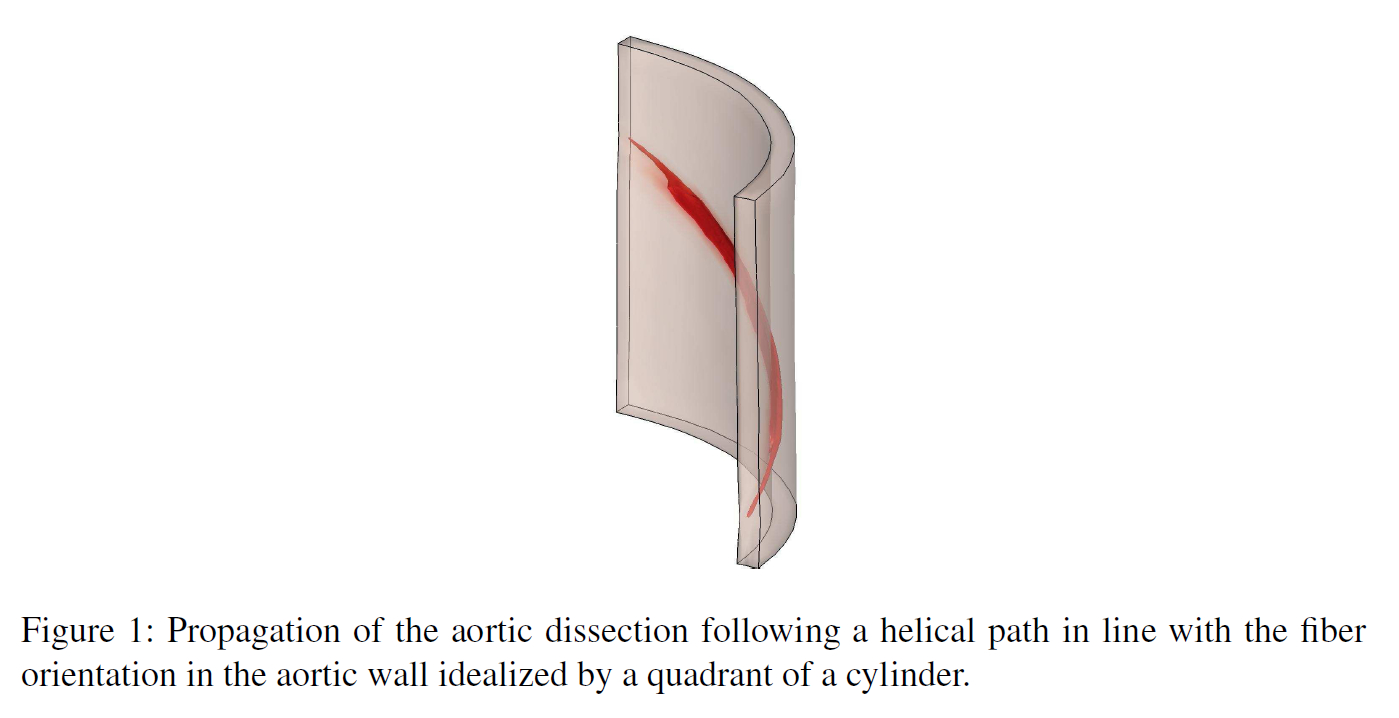WCB 2018 8th World Congress of Biomechanics, Dublin, İrlanda, 8 - 12 Temmuz 2018, ss.1-2, (Özet Bildiri)
Introduction
The initiation and propagation of fractured surfaces associated with the aortic dissection, atherosclerosis and aneurysms are invariably contingent upon the local stress and strain states in the artery wall during supra-physiological loading cycles [1, 2]. This proves computational mechanics quite useful to improve and even guide medical monitoring and preoperative planning.
Methods
The present study is developed on the basis of the variational principle featuring a thermodynamically consistent, gradient-type, diffusive crack phase-field approach to the rupture for which the power balance engenders the Euler-Lagrange equations of the multi-field problem, i.e. the deformation and the phase-field. The respective constitutive model is essentially anisotropic and in accordance with the tissue morphology. A novel anisotropic phase-field model which takes account not only the geometric effect but also the distinct strain-energy contributions with respect to the isotropic and anisotropic parts [3, 4].
ResultsThe prediction of the crack initiation, and the related crack propagation are studied using representative boundary-value problems, i.e. peel tests of the thoracic aortic media, and novel simple concepts of design such as an idealized cylindrical model of the multi-layered thoracic aortic wall with a notch representing the incipient mechanical degeneration, see Figure 1. Additionally, another idealized cylindrical model with an initial tear in the sub-layers of the media pertaining to the nascent false lumen formed provides further insights regarding the failure behavior of the tissue in addition to experiments.
 Discussion
DiscussionThe ultimate rupture of arterial walls are indispensably characterized by their mechanistic nature although the non-Newtonian blood flow with its interaction with the lumen of the solid wall may play a role to a certain extent. In that sense, the above-stated numerical investigations may well be experimentally tested to better understand the rupture phenomenon occurring in artery walls.
